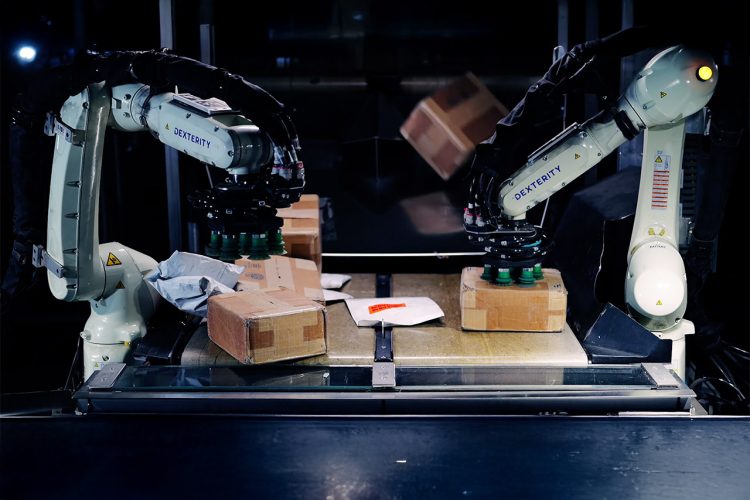1. Introduction
- Contextual Overview:
- Begin by introducing the fast-evolving field of robotics, touching on its significant integration into various industries, including healthcare, manufacturing, and service sectors.
- Highlight the importance of focusing on robot safety, reliability, and human-robot interaction to ensure these technologies can coexist effectively with humans in various environments.
- Purpose of the Research:
- Outline the article’s focus on the current research trends that aim to enhance the three key areas: safety, reliability, and human interaction efficiency.
2. Safety in Robotics
- Definition and Importance:
- Discuss the concept of safety in robotics. Why it’s paramount to ensure robots do not pose risks to humans, especially in collaborative or autonomous settings.
- Technological Innovations in Robot Safety:
- Sensors and Perception: Explain the role of sensors like LIDAR, cameras, and proximity sensors in detecting human presence and preventing accidents.
- Emergency Stop Mechanisms: Discuss advancements in quick-response emergency systems, including physical barriers, emergency stop buttons, and software-driven safety protocols.
- Collision Avoidance Algorithms: Describe how machine learning and AI algorithms are improving robots’ ability to predict and avoid potential collisions with humans or objects.
- Regulatory Frameworks:
- Explore international standards like ISO 10218, ISO 13482, and the European Union’s machinery directives for ensuring safe robot deployment.
- Discuss the importance of regulatory oversight in ensuring manufacturers meet safety standards.
3. Reliability in Robotics
- What is Reliability in Robotics?:
- Define reliability in the context of robotics as the consistent performance of a robot over time, especially in critical tasks. Reliability is key to ensuring robots perform their tasks without failure, reducing downtime in industries where robots are employed.
- Strategies to Improve Robot Reliability:
- Redundancy: Discuss how incorporating redundant systems can prevent robot failures. For example, dual sensors, backup power systems, or even hardware redundancy in robotic arms or legs.
- Self-diagnosis and Maintenance: Examine the emerging technologies in predictive maintenance where robots can detect their own malfunctions and report issues before a failure occurs.
- Durability Testing: Explore how robotic systems are tested for reliability through rigorous durability tests, including stress, environmental, and lifecycle testing.
- Case Studies and Real-World Applications:
- Highlight how industries like automotive manufacturing or healthcare robotics are benefiting from highly reliable robotic systems.
- Mention research from key institutions that have helped develop more durable, reliable robots.

4. Human-Robot Interaction (HRI) Efficiency
- Importance of HRI:
- Explain why seamless human-robot interaction is crucial for robots deployed in human-centric environments, such as homes, hospitals, and workplaces.
- Discuss the challenges of creating robots that can understand human cues, emotions, and intentions.
- Advancements in HRI Technologies:
- Natural Language Processing (NLP): Delve into how AI-powered speech recognition and natural language understanding are enabling robots to communicate effectively with humans.
- Gesture and Emotion Recognition: Explore how robots are being trained to recognize human body language, facial expressions, and voice tone to interpret emotional states and respond accordingly.
- Collaborative Robotics (Cobots): Describe the development of robots designed to work alongside humans in a shared workspace, facilitating smoother and more efficient interactions.
- Human-Centered Design and Ethical Considerations:
- Discuss the importance of user-centric design in robotics to make interactions more intuitive and accessible.
- Explore the ethical concerns related to HRI, including privacy, autonomy, and the potential psychological impacts of interacting with robots.
5. Integrating Safety, Reliability, and HRI for Effective Robotic Systems
- The Intersection of Safety, Reliability, and HRI:
- Argue how these three areas—safety, reliability, and human-robot interaction efficiency—cannot function in isolation and must be integrated for successful robotic deployment.
- Provide examples of industries where all three factors are critical for the successful implementation of robotic systems (e.g., healthcare robots assisting the elderly, autonomous delivery drones).
- Challenges and Future Directions:
- Discuss the ongoing challenges in making robots safer, more reliable, and better at interacting with humans.
- Highlight promising areas of research, such as the integration of AI-driven adaptive learning models to improve the behavior of robots in dynamic environments.
6. Conclusion
- Summary of Key Points:
- Reiterate the importance of improving robot safety, reliability, and interaction efficiency. Emphasize how research in these areas is crucial for the widespread acceptance and success of robots in society.
- Future Outlook:
- Provide a vision of the future of robotics, where robots work seamlessly alongside humans with high levels of trust, efficiency, and safety.
- Conclude by highlighting the importance of continued interdisciplinary research and development in these areas to address emerging challenges.







































